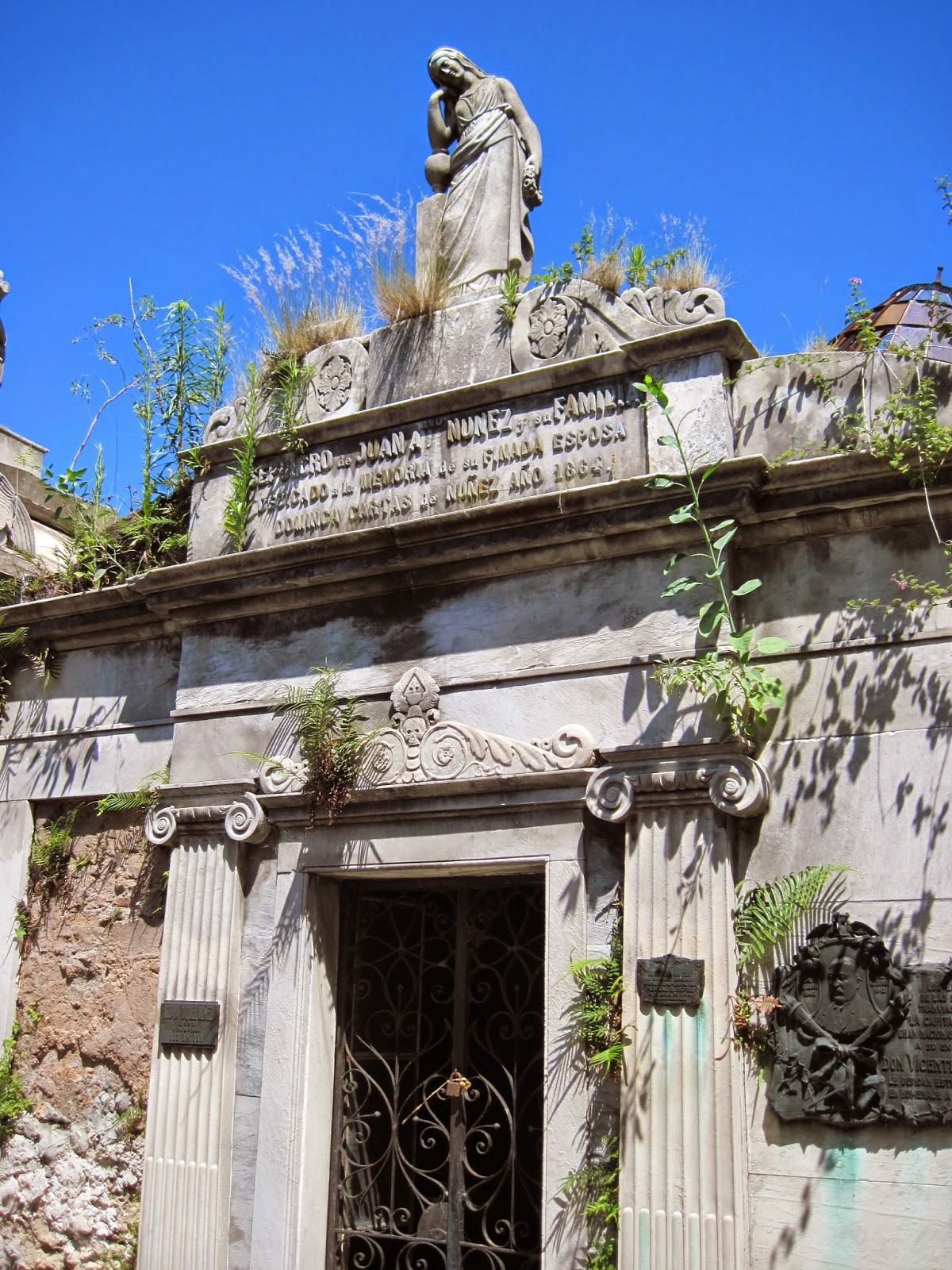Recoleta, is in the Barrio Norte, the most affluent part of Buenos
Aires, it is also the cultural centre and popular with tourists, runners and
cyclists. I headed down Av. Austria through the various Plazas to Plaza Naciones Unidas to see the
Los Arboles de Buenos Aires are now at their best; the Jacaranda
has been in bloom with an abundance of purple flower since late October. The Tipa (Rosewood) is covered in yellow
flowers from late November. Sr. Carlos
Thays planted these native trees throughout the city, lining many of the
avenues.
 |
| Jacaranda mimosifolia Bignoniaceae |
 |
 |
| Tipa (Tipuana tipu) Fabaceae |
 |
| Flor de sada (Calliandra paevifolia) Fabaceae |
Floralis Genérica is a sculpture made of steel and aluminum
located in Plaza de las Naciones Unidas, created by architect Eduardo Catalano
in 2002. The sculpture was designed to
move, closing its petals in the evening and opening them in the morning,
however this mechanism is currently disabled.
Next, I headed for the main tourist attraction, the Recoleta
Cemetery. The mortal remains of many figures in Argentine history are found
here, including the tomb of Eva Perón. I recognised some of the names from the
streets that have beee named after them.
One of the best museums for fine arts is nearby, The Museo Nacional de Bellas Artes. It holds a large collection of European Art from the 12th to 19th century but also a small collection of 19th century Argentine Art.
 |
| Invernada del Ejercito Oriental 1866
Cándido López (1840 -1902)
|
 |
| Un alto en el campo, 1861 Prilidiano Pueyrredón (1823-1870) |






No comments:
Post a Comment